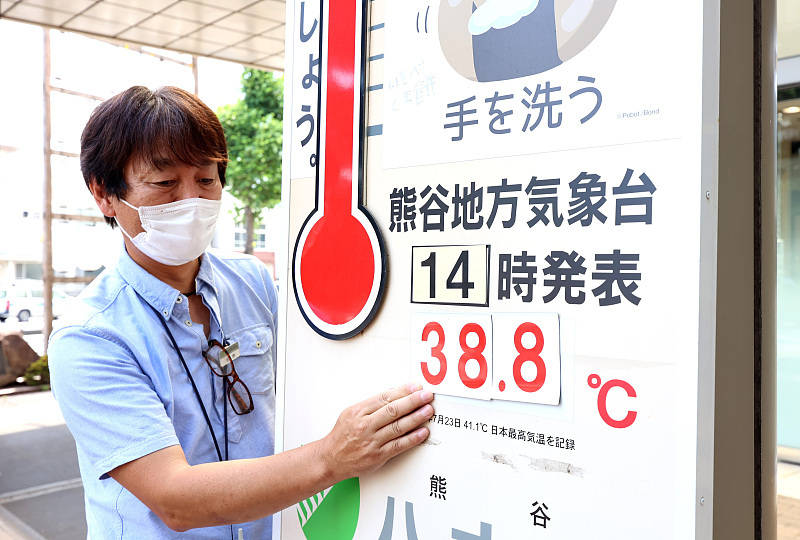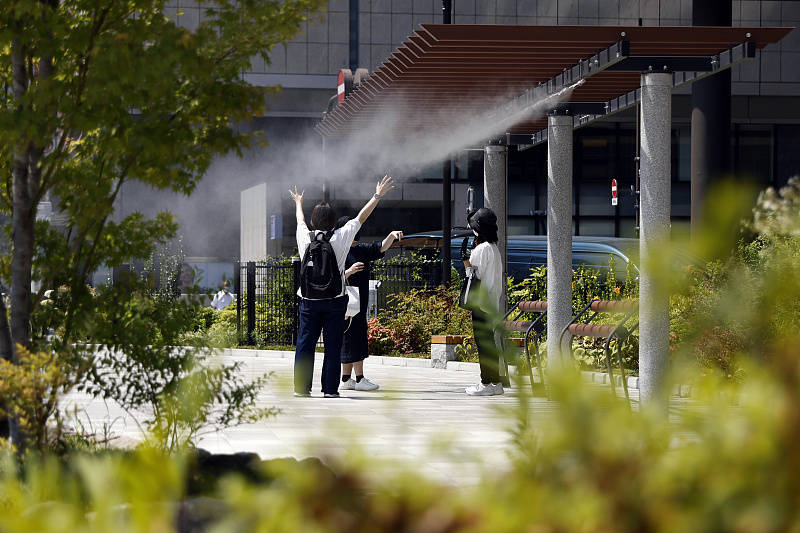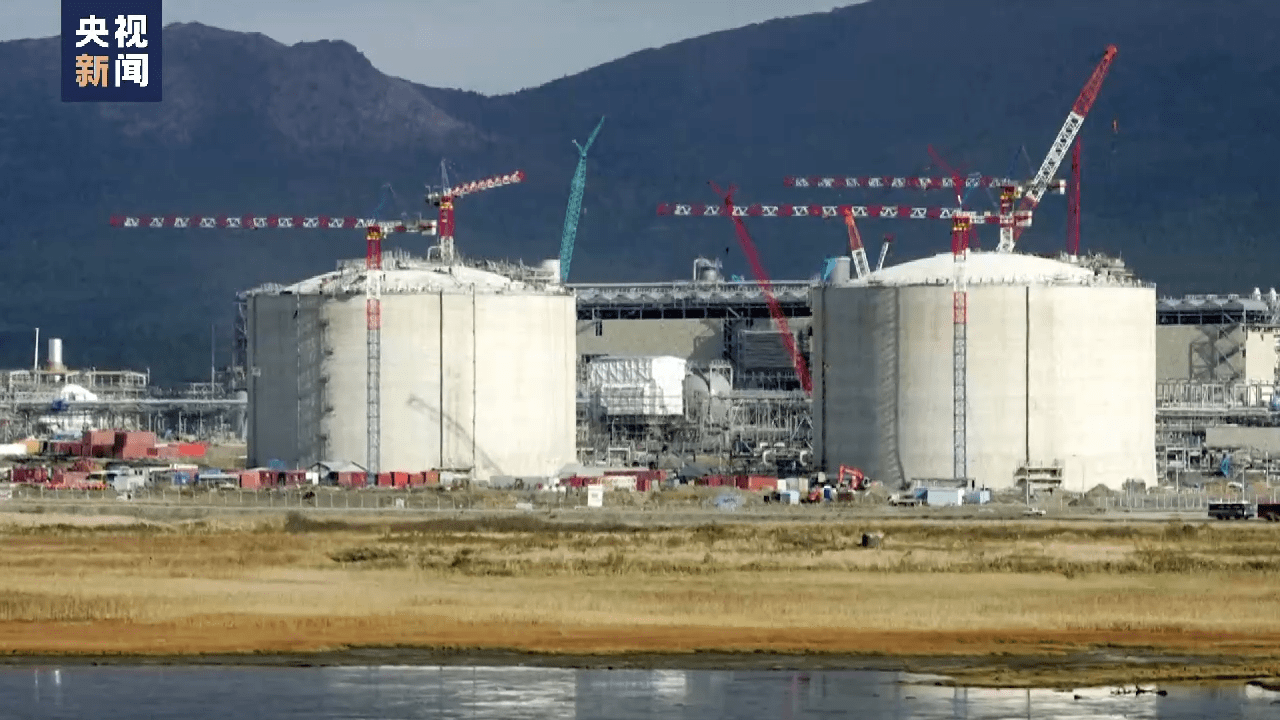Russia sets up a new company to operate the “Sakhalin 2” project, Japan is nervous
Russian President Vladimir Putin signed a decree on June 30 to establish a new company responsible for operating the energy cooperation development project “Sakhalin 2”. Whether the original foreign investors can continue to hold shares is up to Russia. Japan, which has a stake in the “Sakhalin 2” project, but has been keeping pace with the United States and Europe in the process of escalating the situation in Russia and Ukraine, is caught in tension at this time.
According to Kyodo News, a Japanese government official said that the issue of natural gas imports must be dealt with with unprecedented tension. Japanese Prime Minister Fumio Kishida said on July 1 that he was considering consultations with relevant companies on how to respond, and he also emphasized that “liquefied natural gas (LNG) imports will not stop immediately.” Japan’s Minister of Economy, Trade and Industry Koichi Hagiuta said, “We will use all means to ensure that energy supply is foolproof.” But Japanese media are concerned that if the two holding Japanese companies withdraw from the “Sakhalin 2” project, it will further push up the already high prices of natural gas and electricity in Japan. This undoubtedly adds another “fire” to Japan, which is being scorched by high temperatures.
If the “Sakhalin 2” is withdrawn, Japan’s power supply may be threatened
The “Sakhalin 2” project is located on the continental shelf of Sakhalin Island in the Russian Far East, and mainly exploits oil and natural gas. The oil reserves involved in the project are about 100 million tons, and the natural gas reserves are more than 400 billion cubic meters. According to Reuters data, this project accounts for about 4% of global LNG production, mainly supplying Asian countries. About 9 percent of Japan’s LNG imports come from Russia, almost all from the Sakhalin 2 project. The original operator of the “Sakhalin 2” project was Sakhalin Energy Investment Co., Ltd. Among them, Gazprom holds more than 50% of the shares, and Japan’s Mitsui & Co. and Mitsubishi Corporation hold 12.5% and 10% of the shares respectively.
According to the new decree signed by Putin, a new company will be established in Russia to fully take over the personnel and operations of Sakhalin Energy Investment Co., Ltd. Gazprom will continue to retain its original shares, and foreign investors must submit an application for retaining shares within one month, and the Russian government will decide whether to approve it. Shares in Mitsui & Co. and Mitsubishi Corporation fell on news of Putin’s signing of the new decree. The two companies said they were verifying the situation and considering countermeasures.
In addition to the two investment companies that are closely related to the “Sakhalin 2” project, many Japanese companies also purchase fuel from the project. According to Kyodo News, the Japanese power giant JERA, funded by Tokyo Electric Power Group and Chubu Electric Power, purchased LNG from the project as fuel for thermal power generation. About 50% of Hiroshima Gas’s LNG purchases come from “Sakhalin 2”. Tohoku Electric Power, Tokyo Gas, and Toho Gas also purchased from “Sakhalin 2”.
In March 2011, after the radiation leakage accident of the Fukushima Daiichi nuclear power plant, the power generation of Japan’s nuclear power plants was greatly reduced, and the dependence on natural gas and other fossil fuels increased. Japanese Prime Minister Fumio Kishida said in March this year that Japan will not withdraw from the “Sakhalin 2” project, which is crucial to ensuring Japan’s energy security. According to Hashimoto Yu, a researcher at the Japan Institute of Energy Economics, liquefied natural gas (in Japan) accounts for about 30% to 40% of the energy used for power generation. Once the supply of LNG becomes unstable, there is a possibility that electricity supply and demand will become even tighter.
Rare high temperature hits Japan but turns on power saving mode
In the past month, Japan has experienced rare high temperature weather, with the highest temperature exceeding 35 degrees Celsius in many places. Temperatures in Tokyo and surrounding areas reached around 40 degrees Celsius for five consecutive days in late June, the highest June heatwave since records began in 1875. The weather forecast shows that the heat will continue for some time. According to the Japan Meteorological Agency, the local temperature is not expected to drop to 30 degrees Celsius until July 5.

△On June 29, 2022 local time, in Kumagaya, Japan, employees of a department store displayed a temperature of 38.8 degrees Celsius on a blackboard.
Affected by the continuous high temperature, the Tokyo Electric Power Company’s power supply area has issued a power supply shortage alert for four consecutive days since June 27. Monitoring data from many power stations in Japan shows that from 4:30 p.m. to 5:00 p.m. on the 29th, the power reserve rate in the Tokyo area dropped to 2.6%, which was lower than the 3% threshold required to ensure stable power supply. “The last three days have seen the most tense power demand and supply situation,” said an official from the Ministry of Economy, Trade and Industry.
The power supply warning issued by the Tokyo Electric Power Company’s jurisdiction was lifted at 18:00 on June 30, but the Japanese government pointed out that the power supply situation in July was still tight due to the risk of power supply shortages due to aging thermal power plants. According to Japan’s NHK website, in July, except for Tokyo, it is estimated that the power supply reserve rate in power jurisdictions such as Tohoku, Chubu, Hokuriku, Kansai, Shikoku, Kyushu, etc., showing surplus power supply is only 3.7%. While this figure is higher than the 3% minimum required to ensure a stable supply, the picture remains bleak. To this end, the Japanese government issued a power-saving request to the whole country after a lapse of seven years, calling for the proper use of air conditioners and turning off unnecessary lighting from July 1 to the end of September this year, so as to cooperate to save power as much as possible.
The people have experienced many tests, and the government’s price suppression policy is difficult to convince the public
According to Japan’s NHK TV station, 1,517 people were hospitalized due to heat stroke in Tokyo, Japan, in one month due to unusually hot weather, the highest number in the past 10 years. It is reported that from June 28 to 30, the daily number of hospitalizations due to heat stroke exceeded 200, a record high. In July, the temperature in many places in Japan is still very high, and some areas have experienced extreme heat. The Japan Meteorological Agency and the Ministry of the Environment believe that the risk of heatstroke is extremely high under such temperature conditions, and issued a “heatstroke warning” to many areas, calling on the public Take heatstroke prevention and cooling measures to prevent heatstroke.

△On July 1, 2022 local time, in Ginza, Tokyo, Japan, a pedestrian cools down before cooling down the fog.
While the body is being tested by high temperatures, the wallets of the Japanese people are also being tested by devaluation. Affected by the rising cost of raw materials and the sharp depreciation of the yen, the prices of energy and food in Japan have continued to rise. A survey released by the Imperial Japan Database in early June showed that more than 10,000 food items in Japan will increase in price this year, with an average increase of 13%. Data released by Japan’s Ministry of Internal Affairs and Communications on June 24 showed that in May, Japan’s core consumer price index (CPI) excluding fresh food rose 2.1% year-on-year to 101.6, an increase of more than 2% for two consecutive months. Among them, electricity prices rose by 18.6%, pipeline natural gas prices rose by 22.3%, and gasoline prices rose by 13.1%. At the same time, the price increase of food and durable consumer goods other than fresh food is also more obvious. In the absence of sufficient salary increases, Japanese families have a heavy financial burden.
Japan is scheduled to hold parliamentary elections on July 10. In order to probe the movements of voters, Kyodo News conducted a national telephone public opinion survey (the second election poll) from the 26th to the 28th. Regarding the measures taken by the government of Fumio Kishida to deal with rising prices, 15.3% answered “adequate”, and 79.8% answered “inadequate”. As for the most important policy at the time of voting, the top policy is “price increase countermeasures and economic policy” (41.8%). The rise in prices has also been the focus of recent debates between the ruling and opposition parties. The opposition parties advocate lowering or even canceling the consumption tax, but the ruling party camp firmly opposes it. Some experts believe that in the face of rising prices, it is difficult for the Japanese government to come up with a quick and effective solution.
High temperature, lack of electricity, and soaring prices, this summer’s multiple “burning” has made Japan, a member of the G7, devastated. Regarding the variables of the “Sakhalin 2” project, the “Nihon Keizai Shimbun” pointed out that it is still unclear how Russia will supply natural gas, and the risk of power outages in Japan is becoming more and more imminent…
Source: CCTV NewsReturn to Sohu, see more
Editor:
Disclaimer: The opinions of this article only represent the author himself, Sohu is an information publishing platform, and Sohu only provides information storage space services.
